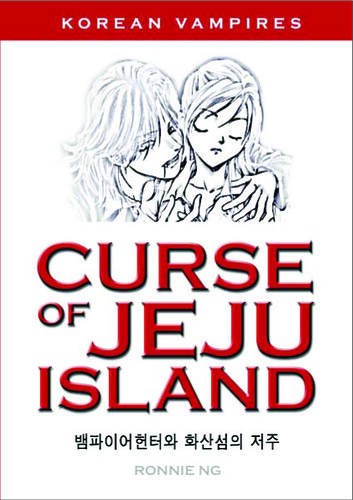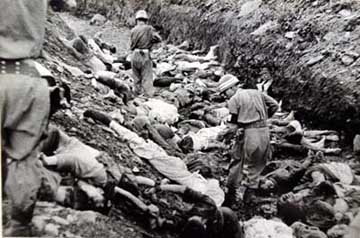Everyone knows whether he or she likes a book, or not, after reading it. DAPHNE LEE finds out how book merchandisers figure out which titles you’ll like before reading them.
YOU can’t judge a book by its cover. But some do. While the prettiest jacket will not disguise a badly-written book, there’s no denying that a customer with nothing particular in mind, browsing indiscriminately in a bookstore and faced with hundreds of books, might well choose the one with the most attractive cover.
Book merchandisers know this and, therefore, the look of a book is something they do notice when ordering new titles.
Seto Kit Sau, who is unit chief of the Kinokuniya Bookstore's children’s fiction department says, “Yes, I like to choose nice covers, but they also have to have good content.”
She names Into the Forest by Anthony Browne as a prime example of a book with an intriguing cover “and a very cool story to boot.”
Children’s book merchandisers agree that children are attracted to colourful covers and parents, too, are often similarly influenced.
“The book cover and design do play a pivotal role in determining its popularity and saleability,” says Samantha Tang, merchandising manager at Popular Book Co.
She says that the first impression is very important and, for busy parents, it may be the only thing that leads to a purchase.
“Most of the time, parents don’t know where to start looking and, if they are not interested in browsing through the book themselves, then the cover is the only thing they have to go by.”
That’s where the merchandiser comes in. He or she has to ensure that, as far as possible, a book’s content lives up to its appearance.
For Kinokuniya's merchandisers, all avid readers themselves, the books they choose must pass the “first paragraph” test.
Teressa Hoon, unit chief of Kinokuniya's literature and general fiction sections, explains: “The first paragraph has to grip you immediately. It must make you want to read more. Even better, it must make you reluctant to put the book down.”
An interesting title is also a plus as it can prompt one to take a book off the shelf in the first place (without which there can be no reading of the first paragraph).
Kinokuniya's non-fiction merchandiser, Yong Jet Yau, picked Rory Stewart's The Places in Between because of its “intriguing title” as well as subject matter: the author's account of his walk across northern Afghanistan shortly after the fall of the Taliban.
Shortly after Kinokuniya started selling the book, it entered the New York Times best-sellers list.
Kinokuniya included it in their Gem of the Month promotion last month and it sold out.
“It's great when a book you believe in sells well,” says Yong. “It makes me feel like I'm on the right track.”
Like her colleagues, she likes the task of introducing customers to books that are new, interesting and surprising.
Says the merchandising manager of the store, Abby Wong, “Informed buying is our ultimate objective. We should know our product and we shouldn't underestimate the intelligence of our consumers.
“Book buyers can start trends by exposing Malaysians to new titles. You often hear customers mention the same old business books, the same old self-help or science books, but there really is so much more out there.”
Yes, there is, but among the many good reads, dross sometimes lurks – and sometimes it ends up on the shelves anyway, thanks to popular demand.
Says Seto, “Sometimes market demands compel us to order books that are not well written. Sometimes, they are popular because they are associated with a hit movie or TV show.”
Although these are books that Seto, if she had her way, would like to keep off the shelves, a merchandiser is required to keep an open mind and not be swayed by personal taste.
“Our likes and dislikes definitely influence our decisions, but we have to be careful not to get too carried away by our own tastes,” says Yvonne Chau, the MPH Bookstores merchandising manager for general books, a department that includes cookery and self-help titles.
Ultimately, bookstores are businesses and the bottom line is to make a profit.
So, as Tang puts it, “We have to try to be conscious of the fact that what we prefer might not be what the public wants.”
What the public wants, apparently, are bestsellers by the likes of Dan Brown, John Grisham and Sophie Kinsella, feng shui books by Joey Yap and Lilian Too, and self-help manuals.
This is why merchandisers must take heed of international bestsellers lists and the latest efforts of tried-and-tested authors.
Hoon says, “Naturally, I will order more copies of a book by A-list authors like Michael Connelly, Mitch Alborn and Kazuo Ishiguro.”
For chains like MPH Bookstores and Times the Bookshop, there is the added complication of differing demands depending on the outlet.
“But, at Bangsar Shopping Centre (in Kuala Lumpur), general fiction titles are more in demand because that is a residential area. We try our best to track the sales in the different outlets to determine the needs of the customers,” she says.
Says Chau, “We take note of the area, the sort of customers and their spending power, and taste in reading material, but sometimes trends change.
“Ten years ago, Malay fiction sold best at the store in Alpha Angle (in Petaling Jaya, Selangor), but English titles are gaining in popularity now.”
“Malaysian authors like Tash Aw (author of the The Harmony Silk Factory) tend to be popular in all the stores,” adds Ramji. “And Devika Bai (The Flight of the Swans) is especially popular in Johor Baru because that was where she lived.”
Malay romance novels are also extremely popular, along with religious books.
Over the last five to 10 years, says Ramji Rabi, MPH’s assistant merchandising manager for the fiction department, Malaysians have increasingly paid more attention to literary award winners.
However, not all winners are hits with Malaysians. Two titles that have been a great success here are Life of Pi by Yann Martell and The God of Small Things by Arundhati Roy.
“What makes the real difference is media attention,” says Wong. “Customers will ask for books that are highlighted by newspapers.”
All the merchandisers we spoke with make it a point to read or at least research what they are choosing for the stores.
“It makes sense to know what we are selling,” says Tang, who says that when time constraints do not allow her to read a book from cover to cover, she then reads reviews in trade magazines and online bookstores, compares sales reports of books in the same genre and seeks the distributors' advice.
“An interest in reading is an asset in this job,” she says. “Thousands of new books are published every year and we must be able to cherry pick titles suitable for our local market.”






























No comments:
Post a Comment